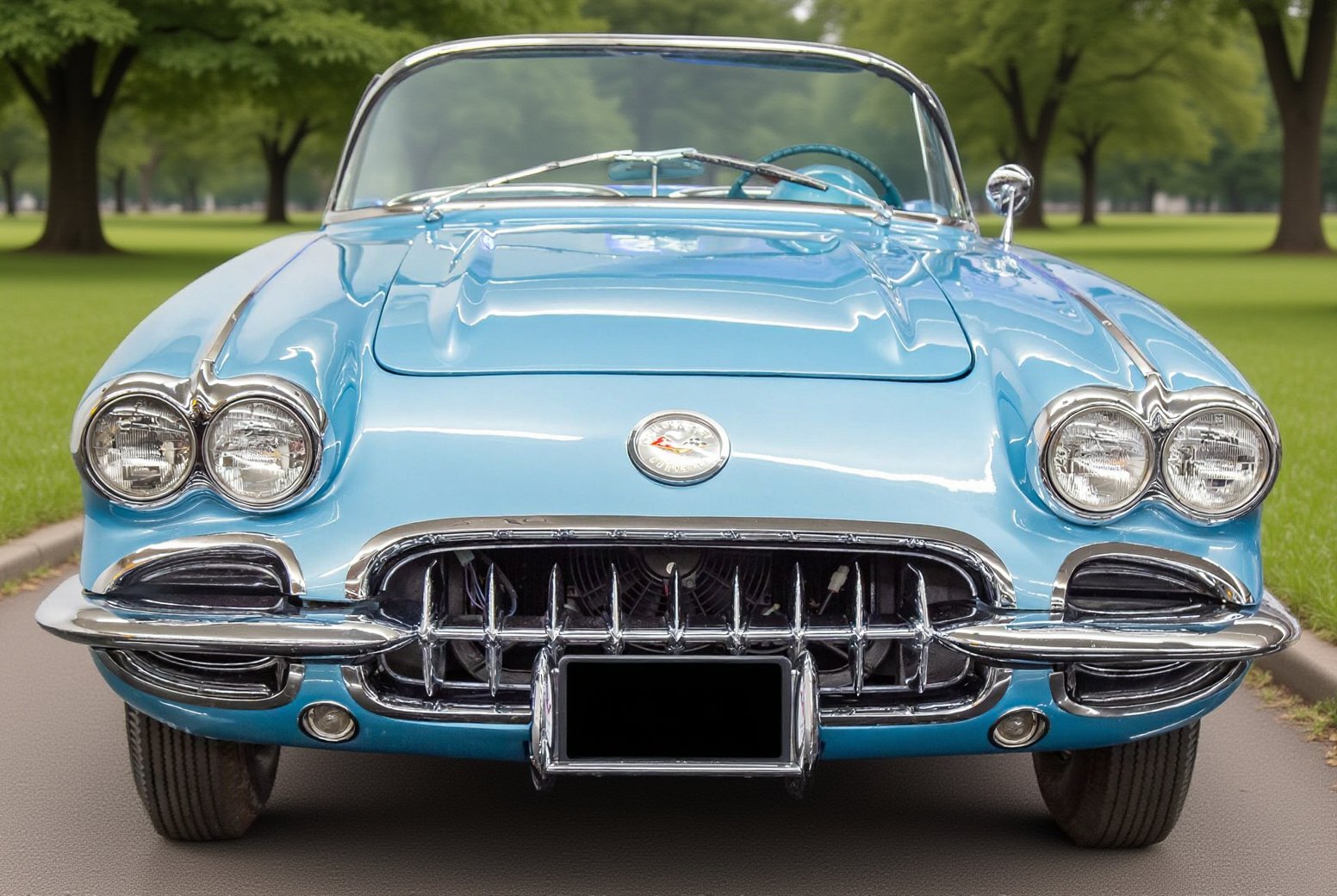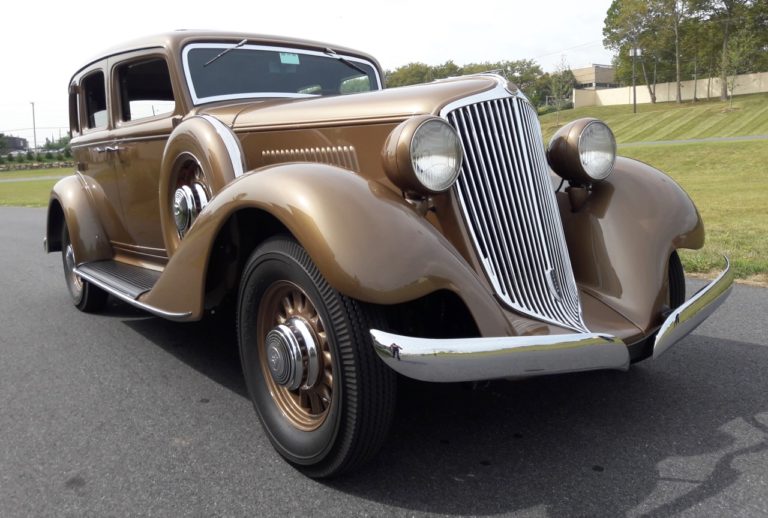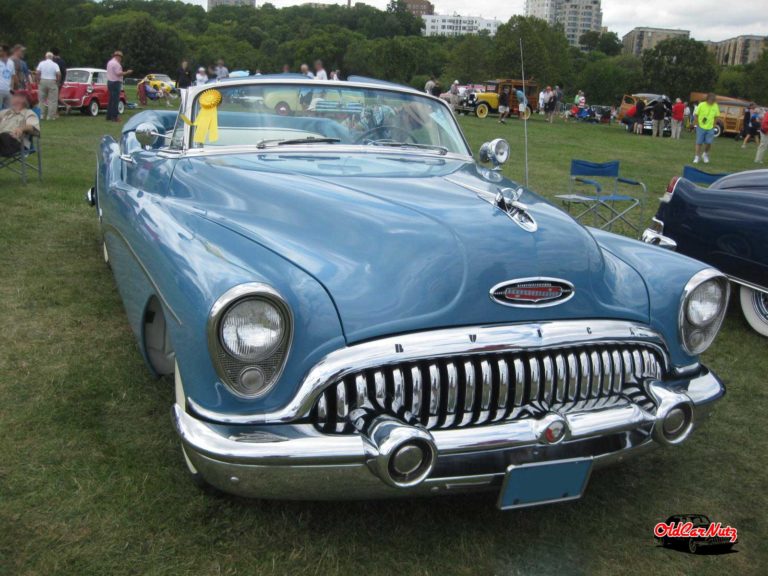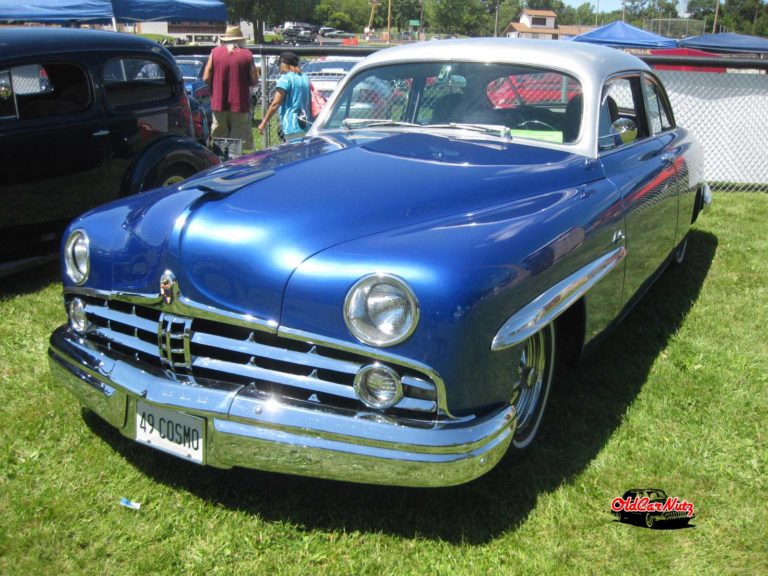The 1959 Chevrolet Corvette marks a pivotal moment in the evolution of American sports cars. General Motors refined the C1 generation’s formula with enhanced engine options and thoughtful interior updates.
The model year introduced significant performance improvements while maintaining the distinctive fiberglass body that defined early Corvette identity.
Production figures reveal consumer enthusiasm; however, specific details about power delivery, transmission choices, and styling modifications provide a more comprehensive story about this automotive milestone.
Engine Performance and Power Options
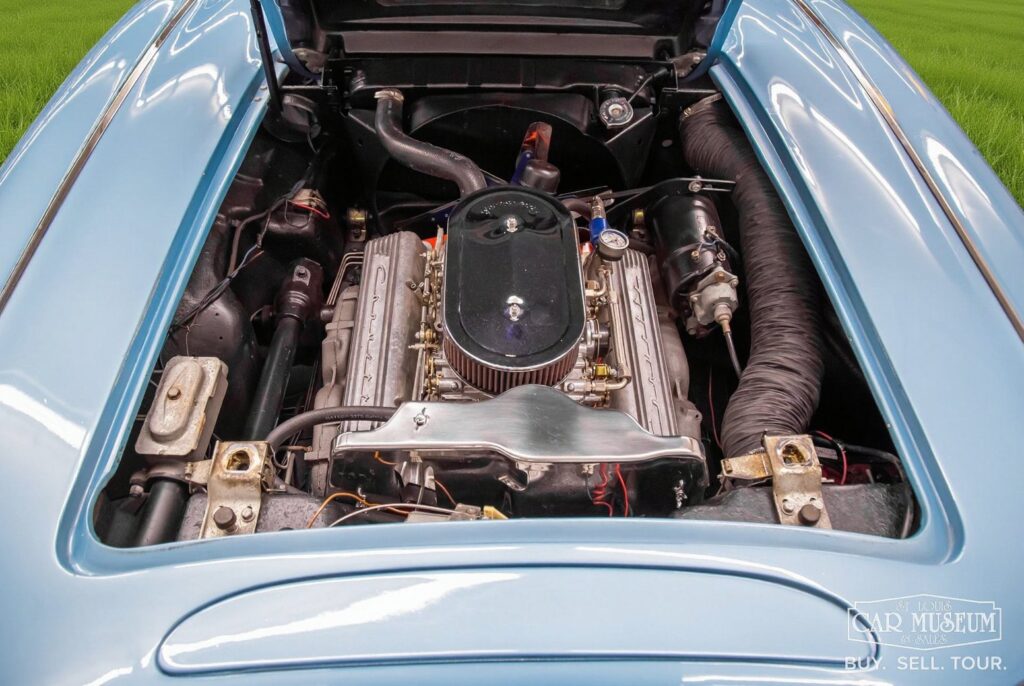
The 1959 Chevrolet Corvette established its performance credentials through an extensive range of 283 cubic inch small-block V8 engine configurations that catered to diverse driving preferences and power requirements.
Five distinct power options were available, from the base 230-horsepower Carter WCFB carburetor setup to the flagship 290-horsepower Rochester Ramjet fuel-injected variant. The dual-carburetor configuration delivered 245 horsepower, while high-performance single-carburetor models produced 270 horsepower.
All engines shared identical 3.87 x 3.00 inch bore and stroke dimensions with cast iron construction, yet compression ratios varied from 9.5:1 to 10.5:1 depending on specification. The fuel-injected engine delivered impressive acceleration capabilities, propelling the Corvette from 0 to 60 MPH in just 6.6 seconds.
Transmission and Drivetrain Configurations
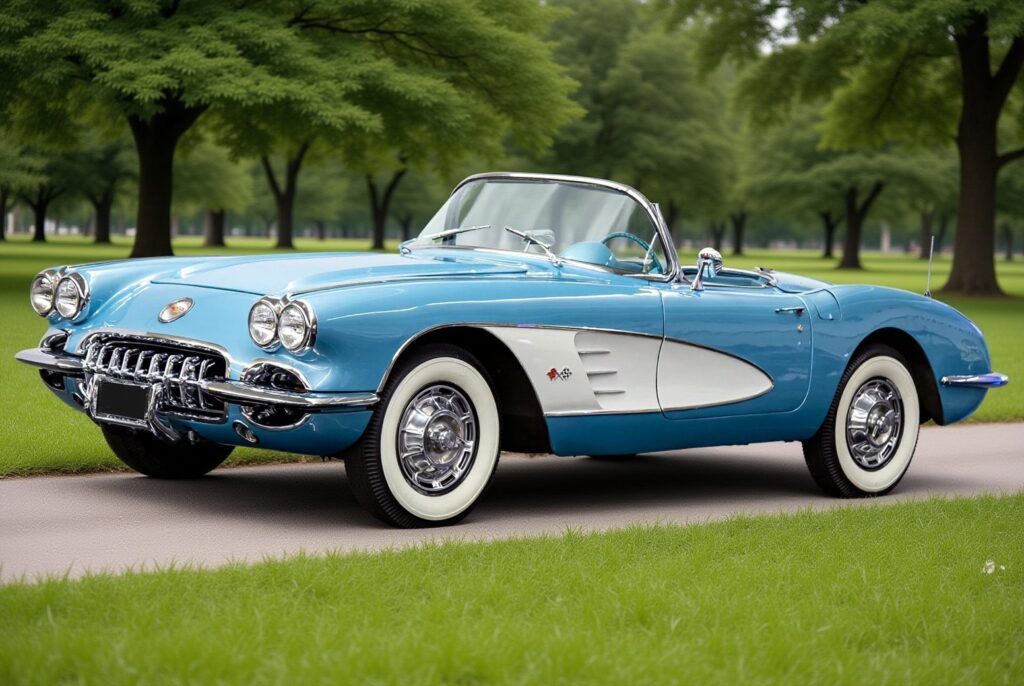
Complementing its robust engine lineup, Chevrolet’s 1959 Corvette offered buyers three distinct transmission choices that greatly influenced the car’s character and performance capabilities.
The standard three-speed Close-Ratio Synchro-Mesh transmission provided adequate performance with gear ratios of 2.21:1, 1.32:1, and 1:1.
Performance enthusiasts could upgrade to the optional four-speed manual (RPO 685) for $188, featuring fully synchronized forward gears and ratios of 2.20:1, 1.66:1, 1.31:1, and 1:1.
The two-speed Powerglide automatic transmission served comfort-oriented drivers but remained unavailable with fuel injection engines, limiting its compatibility with the highest-performance configurations. This automatic featured gear ratios of 1.82:1 for first gear and 1.1:1 for second gear.
Design Updates and Styling Features
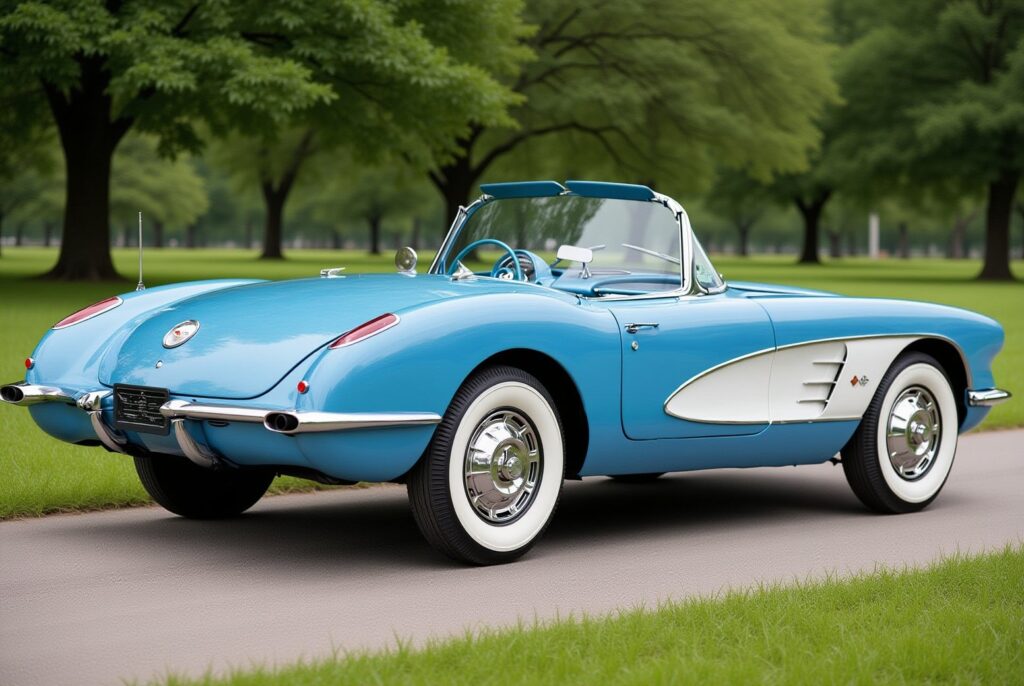
Chevrolet’s 1959 Corvette underwent subtle yet meaningful aesthetic refinements that enhanced its visual appeal without compromising the successful design formula established the previous year.
The exterior received a cleaner appearance through the elimination of false hood louvers and vertical chrome strips from the trunk lid.
Interior improvements included completely redesigned seats and door panels, plus new storage features like an under-dashboard shelf and passenger-side bin.
The instrument panel featured concave, glare-reducing gauges with improved graphics.
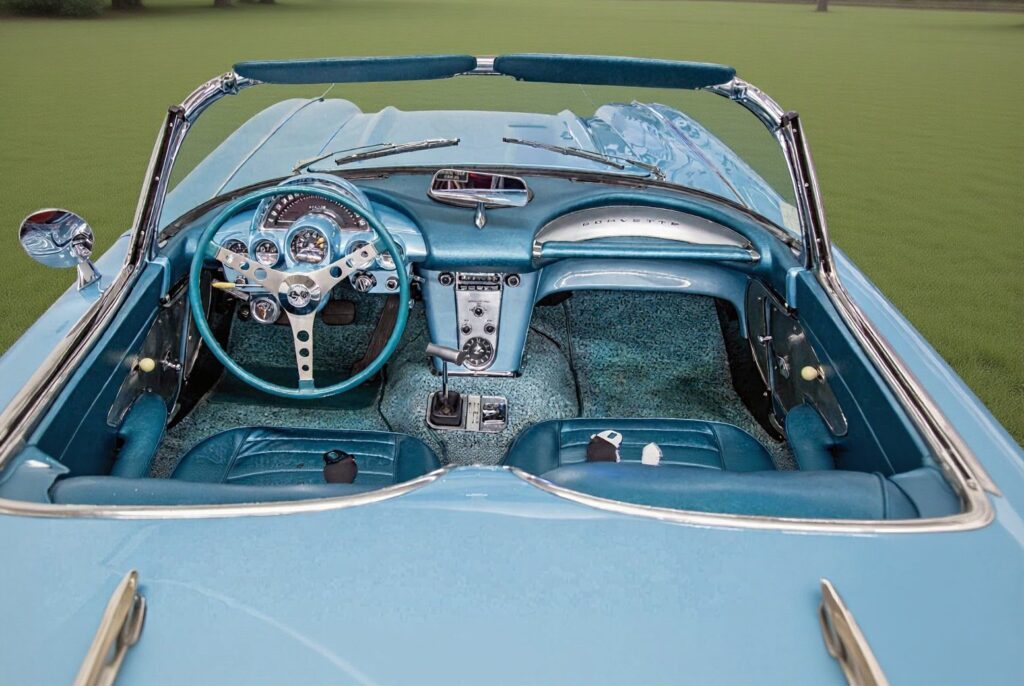
A revolutionary Magic-Mirror acrylic lacquer finish provided enhanced durability and brilliant color depth, while exclusive turquoise convertible tops distinguished the model year.
The Corvette maintained its fiberglass body construction, which continued to set it apart from traditional steel-bodied sports cars of the era.
Production Numbers and Market Pricing
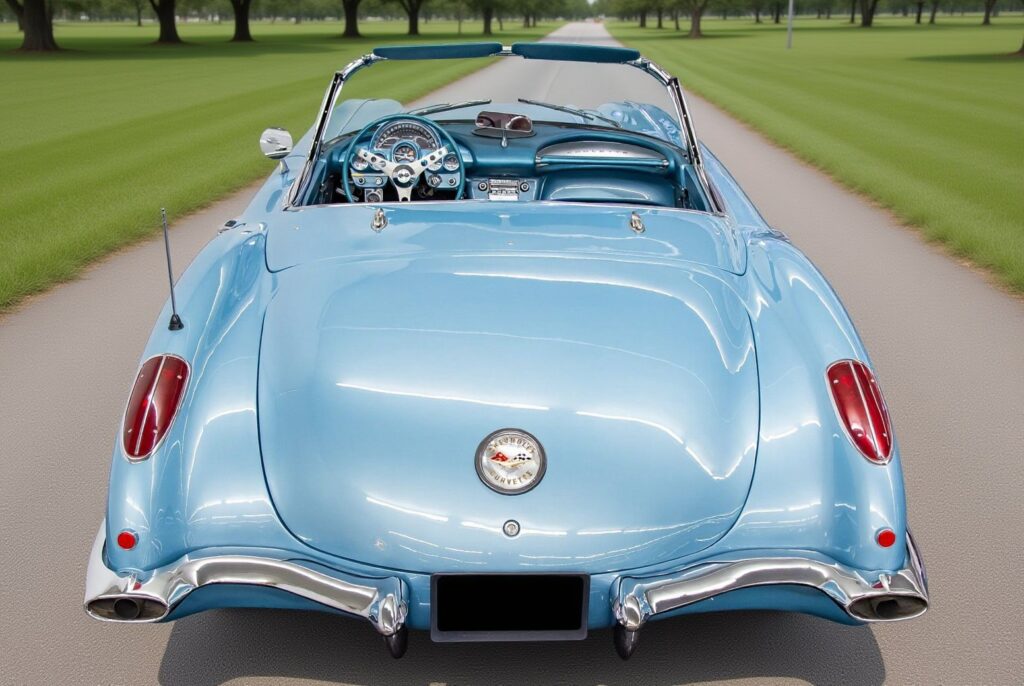
Beyond the visual refinements that distinguished the 1959 model year, production figures and market positioning revealed Chevrolet’s growing confidence in the Corvette’s commercial viability.
Total production reached 9,670 units, all manufactured exclusively at the St. Louis facility as convertible-only models. The base MSRP positioned at $3,875 reflected premium sports car pricing for the era.
Popular options included the deluxe heater ($102.25) installed in 8,909 units and AM signal-seeking radio ($149.80) chosen by 7,001 buyers. Standard equipment included an electric clock, tacometer, and seat belts as part of the base package.
Sequential VIN numbering from J59S100001 through J59S109670 documented each vehicle’s assembly sequence and St. Louis plant origin.
Closing Thoughts
The 1959 Chevrolet Corvette stands as a beloved classic among automotive enthusiasts for several compelling reasons that cement its status as an iconic American sports car.
Performance enthusiasts are drawn to the extensive engine lineup that offered genuine choice, from the reliable 230 HP base model to the groundbreaking 290 HP fuel-injected variant that delivered supercar-level acceleration for its era. The availability of a four-speed manual transmission provided the precise control that driving purists demanded, while the 283 small-block V8 established a legendary engine family that would dominate American performance for decades.
Collectors appreciate the refined design evolution that eliminated the awkward styling elements of earlier years while maintaining the distinctive fiberglass body construction that made Corvettes unique in the American market. The cleaner aesthetic with removed hood louvers and trunk chrome strips created a more sophisticated appearance that aged gracefully.
Restoration enthusiasts value the improved build quality and thoughtful interior updates like re-contoured seats and enhanced storage solutions that demonstrated Chevrolet’s commitment to addressing owner feedback. The increased production numbers of 9,670 units provide sufficient availability for collectors while remaining exclusive enough to maintain desirability.
Most importantly, the 1959 Corvette represents the coming of age of America’s sports car, offering legitimate performance credentials that could compete with European rivals while maintaining distinctly American character.
This combination of raw power, improving refinement, and historical significance as the foundation of Corvette’s performance legacy explains why the 1959 model year remains a highly sought-after classic that captures the imagination of car enthusiasts across generations.
References
- https://www.uniquecarsandparts.com/chevy_corvette_1959_technical_specifications.htm
- https://over-drive-magazine.com/2022/08/31/1959-corvette-fact-sheet/
- https://en.wikipedia.org/wiki/Chevrolet_Corvette_(C1)
- https://www.caranddriver.com/reviews/a15146393/1959-chevrolet-corvette-road-test/
- https://www.corvettemuseum.org/1959-corvette-specs/
- https://www.corvsport.com/1959-corvette-specifications/
- https://mobile.corvettestory.com/specs/1959-Corvette-specs-options.php
- https://www.automobile-catalog.com/make/chevrolet_usa/corvette_c1/corvette_c1/1959.html
- https://www.vettefacts.com/c1/1959.aspx
- https://xr793.com/wp-content/uploads/2021/08/1959-Chevrolet-Corvette-Equipment-Guide.pdf
- https://www.ecklerscorvette.com/corvette/c1-specs
- https://reman-transmission.com/transmissions/chevrolet/corvette/1959/automatic-powerglide
- https://www.supercars.net/blog/1959-chevrolet-corvette-scaglietti-coupe/
- https://www.corvsport.com/1959-corvette-production/
- https://www.corvetteactioncenter.com/specs/c1/1959/59prod.html
- https://www.automobile-catalog.com/production/chevrolet_usa/corvette_c1.html
- https://vette-vues.com/total-corvette-production-numbers-model-years/
